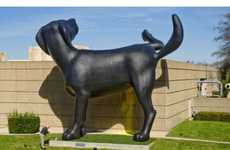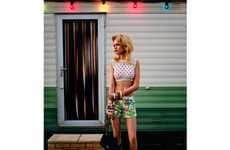
The Perttu Saksa Echo Exhibition Features Roughed-Up Monkeys
Sarah Moore — April 13, 2012 — Art & Design
References: perttusaksa
There is an undeniable resemblance between the primate and human races, and the Perttu Saksa Echo exhibition explores the cultural connection that exists between the two species.
Hosted by the Laboratory gallery, the collection of photographs are hauntingly moving. The photographs were taken in museums of natural history across Europe, and investigate the role that taxidermy and other early stage natural science ventures played in shaping perceptions about the creatures, which so closely resemble human beings.
The Finnish photographer chose to include images of the animals that did not depict them as the cute and cuddly, Disney-like cartoon renderings that one often thinks of when they imagine an animal. Rather, they appear weathered and their skin seems lived-in -- displaying prominent scars and wrinkles.
Saksa's first monograph, also entitled Echo, also accompanies the series and will also be on display.
Hosted by the Laboratory gallery, the collection of photographs are hauntingly moving. The photographs were taken in museums of natural history across Europe, and investigate the role that taxidermy and other early stage natural science ventures played in shaping perceptions about the creatures, which so closely resemble human beings.
The Finnish photographer chose to include images of the animals that did not depict them as the cute and cuddly, Disney-like cartoon renderings that one often thinks of when they imagine an animal. Rather, they appear weathered and their skin seems lived-in -- displaying prominent scars and wrinkles.
Saksa's first monograph, also entitled Echo, also accompanies the series and will also be on display.
Trend Themes
1. Primate Art - Exploring the intersection between primates and human culture through art, with a focus on non-traditional and gritty representations of primates.
2. Natural History Reflection - Re-examining how early natural history ventures may have shaped our perceptions of non-human primates.
3. Photography and Taxidermy - Investigating the role of taxidermy in the early days of natural history through photography.
Industry Implications
1. Art - Exploring the boundaries of what is traditionally considered primate art to expand artistic horizons.
2. Museums - Using photography and other media to challenge traditional narratives and representations in natural history and museum exhibitions.
3. Photography - Challenging traditional representations of non-human primates and animals more broadly through photography and related media.
1.5
Score
Popularity
Activity
Freshness























